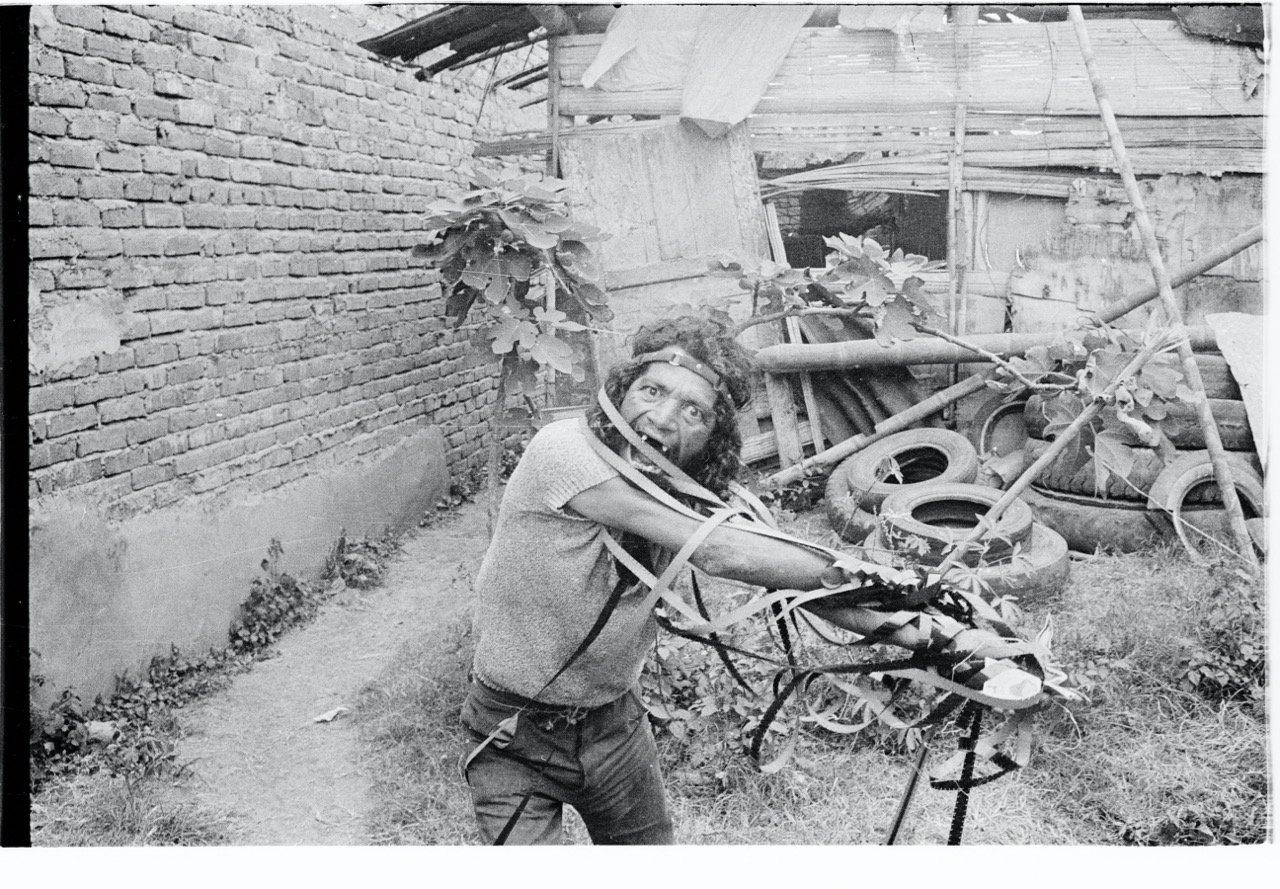AGARRANDO PUEBLO | EDUARDO CARVAJAL
Agarrando Pueblo (in English, The Vampires of Poverty) is a 1977 film co-written and co-directed by Luis Ospina (Cali, 1949 – Bogotá, 2019) and Carlos Mayolo (Cali, 1945 – Bogotá, 2007), with Eduardo Carvajal (Cali, 1949) responsible for the color photography.
The film is a ‘mockumentary,’ a narrative product in which fictional events are portrayed as real, using a documentary style.
The protagonists of the film (the filmmakers themselves) play the role of a television crew hired by a German broadcaster to produce a documentary on the rampant poverty and misery in South America.
The film, which lasts about twenty-eight minutes, is set in Cali, Colombia, and is shot entirely in black and white. However, color footage is often inserted, creating a stark contrast even within the same scene, just shot from another angle. This simple yet effective directorial choice supports the narrative of the behind-the-scenes of a real German documentary.
The film satirically and polemically portrays the ‘vampires of poverty,’ those who profit from and exploit people in disadvantaged social conditions for their own gain—in other words, ‘pornomiseria’.
This abhorrent practice is depicted with a disheartening realism, such as children being paid to undress and jump naked into a fountain for the cameras in exchange for money—“swim around a little and come get the money.” Another example is a girl being paid to act as a young mother living in a wooden shack with her (fake) husband and (fake) children. During the filming of this scene, a man bursts into the frame, behaving erratically, yelling at the directors, calling them “bloodsucking vampires,” and driving them away. He then unrolls the film, puts it in his mouth, and dances wildly in a liberating outburst.
The staging, the fiction, is only revealed at the end, when this man reappears alongside the filmmakers as they openly discuss the documentary, which scenes they believe are most representative, and the potential impact, positive or negative, such a work might have on viewers worldwide.
Shot in 1977 but remarkably relevant today, Agarrando Pueblo reminds us how voyeuristic ego is always lurking. Also, it outlines the boundary between the need to document, to narrate, and the respect for those experiencing the harsh realities of war, poverty, and social hardship, in other words the vulnerability of an extreme need position.
The artwork is part of the group exhibition “Vampires fear no looking glass,” curated by Andrés Matute Echeverri and María Wills Londoño, for the 2024 edition of the Rencontres d’Arles festival, July 1–September 29, 2024.
Eduardo “La Rata” Carvajal
Agarrando Pueblo, 1977
Film by Luis Ospina and Carlos Mayolo, 28’37’’
Production still, Courtesy of the artist
28/08/24

